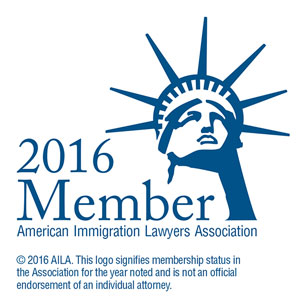On Friday, April 17, 2015, the U.S. Court of Appeals for the Fifth Circuit heard oral arguments on the motion by the United States for a stay pending appeal of the preliminary injunction issued by Judge Andrew Hanen of the U.S. District Court for the Southern District of Texas in Texas v. U.S., which currently prevents implementation of the DAPA and expanded DACA programs set out in a November 20, 2014 Memorandum of Secretary of Homeland Security Jeh Johnson. The decision on the motion for stay will not be the last word with respect to the preliminary injunction, which is the subject of a pending expedited appeal with briefing scheduled to be completed by mid-May and oral argument possible over the summer. However, the decision on the motion for stay will determine whether implementation of DAPA and expanded DACA can resume immediately.
In a previous blog post, I provided some initial reaction to the Memorandum and Order in which Judge Hanen issued his injunction. Having listened to the recording of the oral argument that is available online, it seemed appropriate to provide some initial reactions to the oral argument as well. Nicholas Espiritu of the National Immigration Law Center, who was actually present at the argument, provided his own recap in a blog post that I would urge readers to review, but I think it is possible that reviewing the recording may make it possible to pick up some things that were less obvious in person—although since a recording still has some disadvantages relative to a transcript, it is also possible that the below may contain errors, for which I apologize in advance.
As background, the three Fifth Circuit judges on the panel hearing the motion for stay were Judge Jerry E. Smith, appointed to the Fifth Circuit by Ronald Reagan in 1987; Judge Jennifer W. Elrod, appointed to the Fifth Circuit by George W. Bush in 2007; and Judge Stephen A. Higginson, appointed to the Fifth Circuit by President Obama in 2011. Texas was represented by state solicitor general Scott A. Keller, and the United States by Acting Assistant Attorney General Scott A. Mizer.
Near the beginning of the argument, Judge Elrod offered an extensive hypothetical regarding the question of reviewability: would the states be able to sue, she asked, if the administration gave something like DAPA to all of the aliens present without authorization? What about if the administration gave that same population voting rights? The goverment’s attorney, AAG Mizer, responded that the states wouldn’t have standing in the hypothetical case of DAPA being greatly expanded, although there might be competitor standing by other workers. In the voting hypothetical, however, he indicated that the states would probably have standing because the Voting Rights Act has provisions giving special rights and thus standing to states.
On the topic of reviewability, Judge Higginson asked whether expanding deferred action and thereby vastly expanding the class of people eligible for employment authorization might be reviewable, despite the existence of the longstanding regulations regarding employment authorization for deferred action recipients, if employment authorization through deferred action had previously been available to a smaller class of people.
Judge Elrod raised the issue of the district court’s factual finding that there is not an actual exercise of discretion by USCIS, and whether it is necessary to overcome a clear-error standard of review in order for the government to prevail with regard to that finding—a point that she revisited later in the argument. The argument was based on the agency’s alleged practices in adjudicating applications for the original DACA program, as instituted in 2012 by then-Secretary of Homeland Security Janet Napolitano, which was not challenged by the plaintiff States and is not affected by the injunction; Judge Hanen effectively found that DHS had not exercised discretion in the 2012 DACA program and so would not exercise discretion with DAPA and expanded DACA. Judge Higginson, in response, made an interesting point about how the fact the agency is removing more people than ever before may rebut the suggestion that DHS is being pretextual in claiming that they are exercising discretion.
Judge Elrod then raised the issue of whether the government has been disingenuous in the litigation, and whether that influences a credibility determination. (On the question of whether the attorneys for the government indeed had breached any ethical obligations, I would refer the reader to an AILA Leadership Blog postby Cyrus D. Mehta in his capacity as Chair of the AILA Ethics Committee, and the related more comprehensive paper from the AILA Ethics Committee, “Judge Hanen’s Troubling Accusations of Unethical Conduct in Texas v. United States of America”.) The district court, AAG Mizner pointed out in response, considered “public safety” denials of the original 2012 DACA as not being discretionary, which is not really fair, since protecting public safety is a major discretionary factor.
Judge Higginson pointed out, with regard to the question of alleged disingenuousness and credibility, that the district court doesn’t actually seem to have made any credibility finding regarding the competing affidavits of USCIS union official Kenneth Palinkas and USCIS Associate Director for Service Center Operations Donald Neufeld, who had offered vastly different accounts of how applications are processed. That goes to Judge Elrod’s earlier point regarding the finding of fact, since it would seem to be error to make such a finding while simply ignoring a contrary affidavit and without having held an evidentiary hearing to resolve any credibility issues.
Returning to the question of standing and reviewability, the government noted that “Texas has been here before” in terms of trying to sue the US government about immigration policy, in 1997, and lost. AAG Mizner further pointed out that 8 U.S.C. 1252(g), and the Supreme Court’s decision in Reno v. American-Arab Anti-Discrimination Committee, 525 U.S. 471 (1999), interpreting that section, argue against anybody being able to sue regarding prosecutorial discretion—if even disappointed aliens can’t sue regarding the exercise of such discretion, then why would states, who have no role in immigration, be able to do so?
Continuing with the standing discussion, Judge Smith directed AAG Mizer to the Supreme Court’s decision in Massachusetts v. EPA, 549 U.S. 497 (2007), which he considered to be a key case on the standing issue. Mizer responded, first, that there isn’t a territorial effect in this case as in Massachusetts, where the state’s territory was being affected (by rising sea levels resulting from global warming). Also, the specific statute in Massachusetts v. EPA gave a specific right to sue, while the INA, Mizer argued, “is not enacted to protect the states”.
Mizer moved on to an interesting hypothetical about the problem with Texas’s standing argument. Take the case of thousands of paroled Cubans, for example, who then became eligible to adjust status (under the Cuban Adjustment Act). On Texas’s theory, if the paroled aliens moved to Texas, then Texas would have a judicially cognizable harm. But to find standing for Texas under such circumstances, Mizer said, would be inconsistent with the FAIR v. Reno decision of the D.C. Circuit, which rejected a challenge to an agreement between the US and Cuba that would have such an effect. Indeed, if Texas is right, Mizer argued, then they would be able to challenge an individual decision to grant a single person asylum, because if that person then gets a Texas driver’s license, it’s a harm to Texas.
Judge Elrod asked about why the US didn’t address the constitutional arguments made by the plaintiffs below (and not passed upon by the District Court). Given the burden is on the government, she suggested that this might mean the government would lose at the stay stage. Between this, the earlier noted questions from Judge Elrod, and a question soon thereafter in which Judge Elrod relied on President Obama’s comments at a press conference, rather as Judge Hanen had below, it seemed that Judge Elrod might be leaning in favor of denying a stay, although reading the proverbial “tea leaves” from an oral argument is always tricky.
Judge Higginson next returned to a variant of his point about the potential significance of DHS’s high number of removals, noting that the “abdication” theory propounded by Judge Hanen doesn’t make sense given that high number.
Judge Higginson followed up with an interesting hypothetical question about what would happen if the next administration flipped the priorities and went after DAPA recipients. AAG Mizer responded that DHS hasn’t bound itself not to change its mind. Secretary Johnson may have bound his subordinates, but he has not bound the agency.
Returning to the question of standing, Judge Smith asked about the “special solicitude” that Massachusetts v. EPA says is afforded to the states. Mizer says the immigration context is different than that case, because the Supreme Court has said in Arizona v. United States that the states can’t enact laws to conflict with federal immigration policy; why should the states be able to file a lawsuit to the same end?
Judge Elrod then asked AAG Mizer about whether “lawful status” is a benefit and about the difference between this and the Watt case, that is, Watt v. Energy Action Education Foundation, 454 U.S. 151 (1981). Regarding Watt, Mizer’s response was to point out that California actually had a statutory interest in sharing the revenues from the program at issue in that case. Regarding “legal status”, Mizer stated that deferred action is not a lawful status, just lawful presence. There followed a somewhat confused discussion of what exactly lawful presence is. AAG Mizer ultimately pointed out that it doesn’t matter a great deal as a practical matter if one has lawful presence under DAPA, because DAPA beneficiaries already had more than a year of unlawful presence to begin with, and would thus already have sufficient unlawful presence to trigger the 10-year bar (that is, INA §212(a)(9)(B)(i)(II)).
The states’ lawyer, Texas Solicitor General Keller (TSG Keller for short), near the beginning of his argument, tried to pick up the thread regarding lawful presence versus lawful status and make the case that granting “lawful presence” is affirmative government action different than prosecutorial discretion. He couldn’t answer a question whether past deferred action grantees had lawful presence, but suggested that they might not have. He also seemed near the beginning of is argument to concede that the scale of the program is not “pertinent to the legal doctrines”, though he then said that it “colors whether it is a substantive rule”.
Judge Higginson, picking up on the earlier discussion of lawful presence and lawful status, cited to Arizona v. United States and other case law to say that allowed presence from deferred action is different from lawful status.
TSG Keller moved on to talk about the double deference afforded in this stay posture. He returned again later in the argument to a discussion of the “stay posture” and the record compiled on an expedited basis. I found this interesting because to the extent the decision on the motion to stay relies on deference factors unique to the stay context, that suggests that any unfavorable decision on the motion to stay should not be given much deference by the panel that subsequently considers the appeal of the preliminary injunction.
One of the more notable aggressive moments of TSG Keller’s argument was when he claimed that 8 U.S.C. §1324a(h)(3)is only a “definitional” provision, and that the existing regulations regarding employment authorization may not be legal. Judge Hanen, as I had pointed out in my prior post on this blog, had seemed to ignore that statute and the portion of the regulations, 8 C.F.R. §274a.12(c)(14), authorizing the grant of employment authorization to deferred action recipients. Suggesting that the statutory provision is nearly meaningless and the regulations potentially invalid is, I suppose, an interesting alternative analytical route, but the argument strikes me as unconvincing, and would have far-reaching and problematic consequences if it did succeed. This argument by TSG Keller would imply that the courts should read the statute to invalidate, for example, all employment authorization given to applicants for adjustment of status pursuant to 8 C.F.R. §274a.12(c)(9), just because the powers given to the Secretary of Homeland Security (formerly the Attorney General) by the statute to confer such employment authorization happen to be bestowed in the form of a definitional provision.
Another somewhat rocky moment in TSG Keller’s argument pertained to the “abdication” theory of Article III standing mentioned by Judge Hanen, regarding which even Judge Elrod appeared to be skeptical. Judge Elrod was able to get TSG Keller to clarify that the states would still need to show Article III injury in order to proceed on such a theory of standing. As examples of such injury, TSG Keller pointed to driver’s licenses, health care and education benefits.
On the question of whether discretion was actually exercised in adjudicating applications under the 2012 DACA program, Judge Higginson pointed out that because of “self-selection bias”, you’d expect a high approval rate. That is, given that it is up to each applicant whether to seek the benefit, people who aren’t going to qualify for the benefit won’t tend to apply for it. This seemed a compelling point to me, and Judge Higginson returned to it repeatedly. This discussion of discretion led to a further discussion of the data, or lack thereof, regarding reasons for refusal and so on in DACA 2012, and why the government didn’t, or couldn’t, provide evidence of discretionary refusals—evidently DHS had not kept track of such discretionary denials separately from other denials.
Also with respect to discretion, Judge Higginson had what I thought was a very interesting point about the perverse incentive that would be created by adopting the states’ viewpoint on what evidences a proper exercise of discretion. If a high approval rate for those applicants meeting the written policy criteria is evidence of a lack of discretion, does that mean that executive agencies need to be careful not to comply with their written policies too well? He came back to this again later in the argument. This too struck me as a compelling point, because the implication of the states’ argument is that executive-branch policies not meant to confer enforceable rights on the public may only be defensible if the administration is careful to be arbitrary and unpredictable, allowing lower-level officers to make decisions without any meaningful guidance from their superiors—which would be a very strange way to run the executive branch, and a very strange policy to mandate as a matter of administrative law.
Judge Higginson also pointed out that in one of the cases the states have cited, the remedy for an agency supposedly not exercising the discretion that it claimed to be exercising was remand to the agency. But he seemed potentially convinced by TSG Keller’s response that this possibility would be more relevant to the merits than to the stay.
In an interesting exchange towards the end of TSG Keller’s argument, both he and Judge Elrod seemed to say that if it were “just deferred action” this would be a very different case. It seems to me, however, that the difference is not so clear, because once you get “just deferred action” you are eligible for an EAD under the existing regulations, as I have explained previously.
In his rebuttal argument, AAG Mizer argued that deferred action has always conferred lawful presence, and that Congress has acknowledged that.
Judge Elrod pressed AAG Mizner during his rebuttal regarding what scheme Texas could use to decide whom to give driver’s licenses to, that would not necessarily result in the grant of licenses to DAPA recipients, as the U.S.’s argument had seemed to suggest was possible. AAG Mizer indicated that Texas could come up with a classification scheme not relying on employment authorization, as long as there was a legitimate state reason for that classification scheme.
Judge Higginson followed up with an interesting question about whether Congressional appropriations sufficient to remove all 11 million unauthorized aliens would mandate that this be done. AAG Mizer responded there would be an impoundment problem with the funds not being utilized for their intended purpose in that hypothetical, but that the government would still have some residual discretion to consider foreign policy and humanitarian concerns and so on.
Regarding the “status quo” standard for a stay, Mizer points them to Justice O’Connor’s stay opinion in INS v. Legalization Assistance Project, 510 U.S. 1301 (1993) (O’Connor, J., in chambers), regarding the injury that the federal government suffers when the judicial branch interferes in its internal processes.
At the end of the argument, Judge Elrod pushed AAG Mizer regarding whether there would be significant benefits granted during a period after any lifting of the stay that would be difficult to unwind if the preliminary injunction were ultimately affirmed. She did not seem convinced by his response.
Based on this oral argument, the most difficult prediction appears to me to be what view Judge Smith will take on the merits. Although it seemed from Judge Smith’s questions regarding Massachusetts v. EPA that he was inclined to find in favor of the plaintiff states with regard to standing, his questions did not reveal his view of the merits to the extent that Judge Elrod’s did. Judge Higginson was also a bit harder to read than Judge Elrod, but on balance it seems from the oral argument that he is more likely to favor the federal government’s position. Even if Judge Smith and Judge Elrod were both to agree that the plaintiff states had standing, however, a stay could still be granted if Judge Smith were to agree with Judge Higginson’s apparent view of the federal government’s likelihood of prevailing on the merits. While I am not sure how likely such an outcome is, it is not a possibility that I would entirely rule out based solely on the oral argument.




